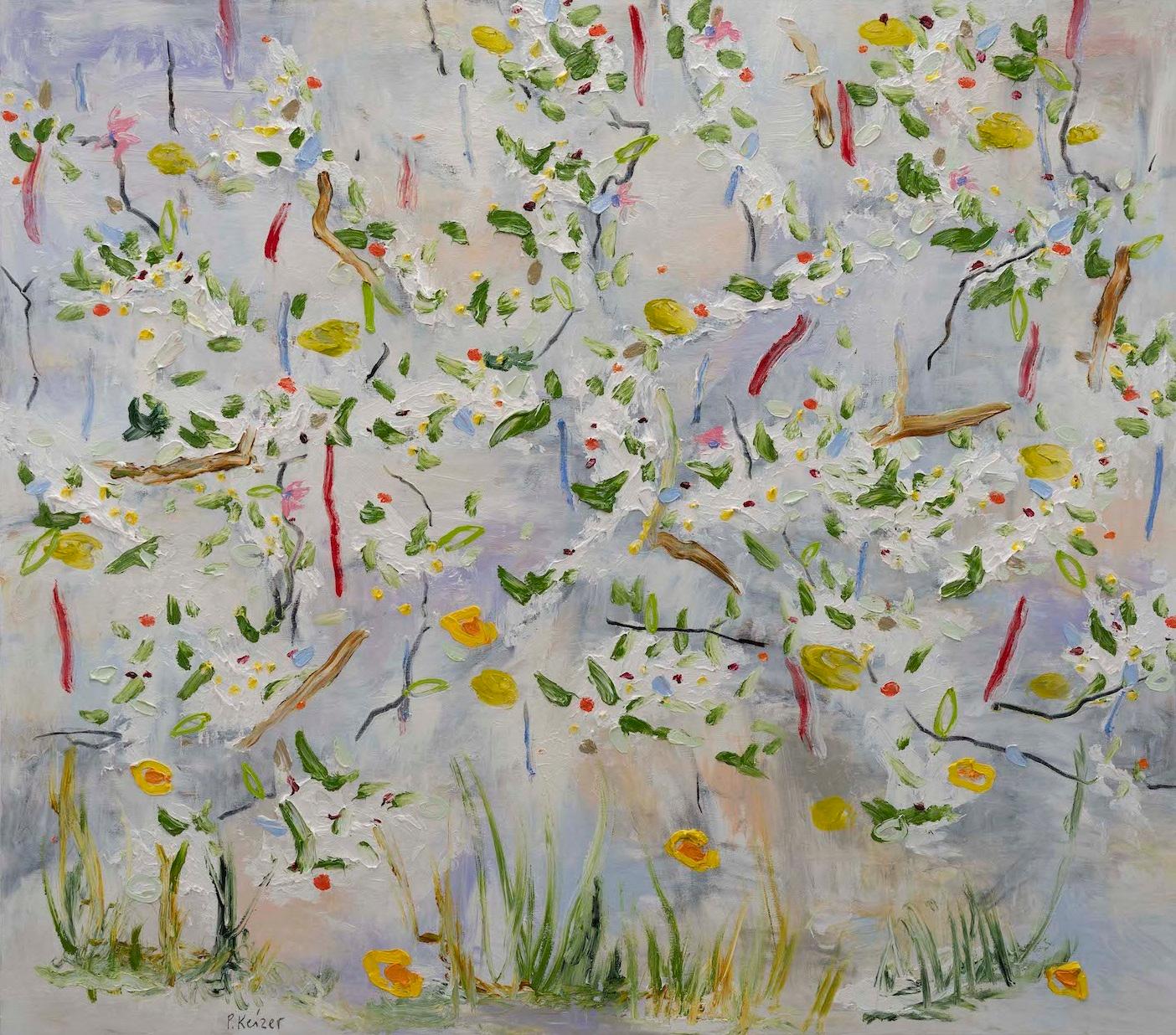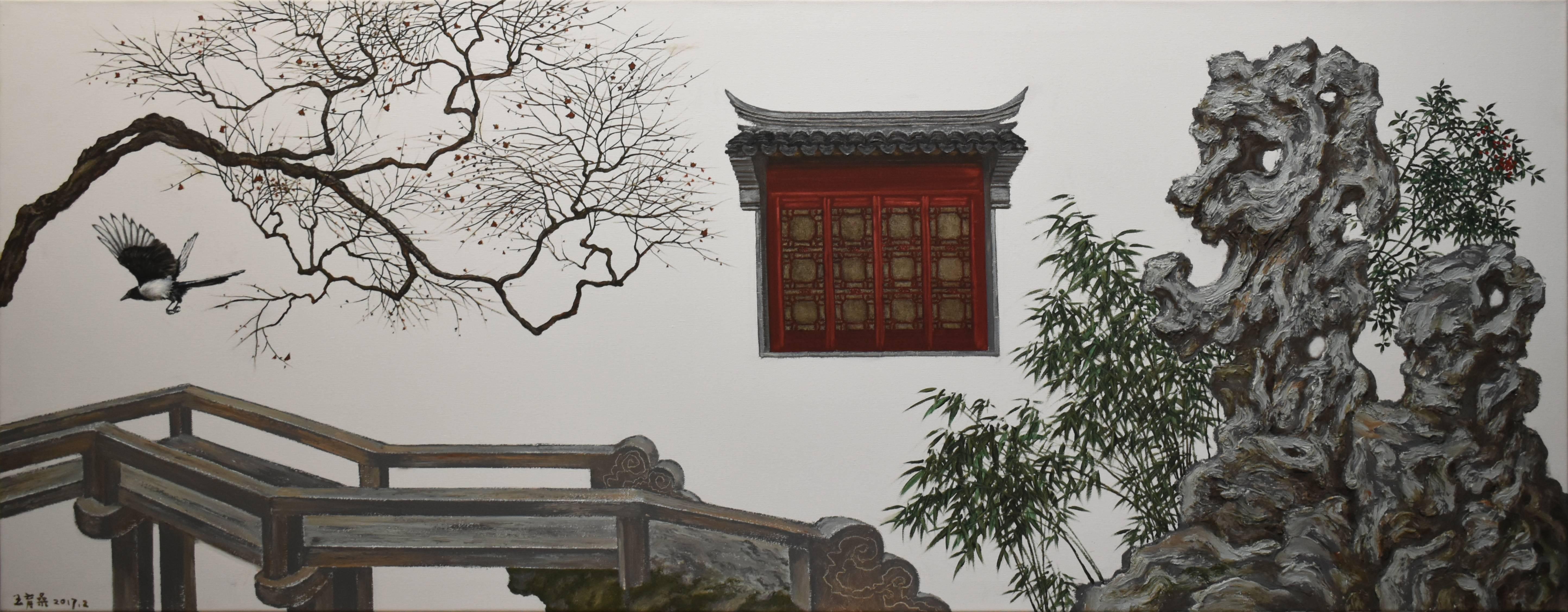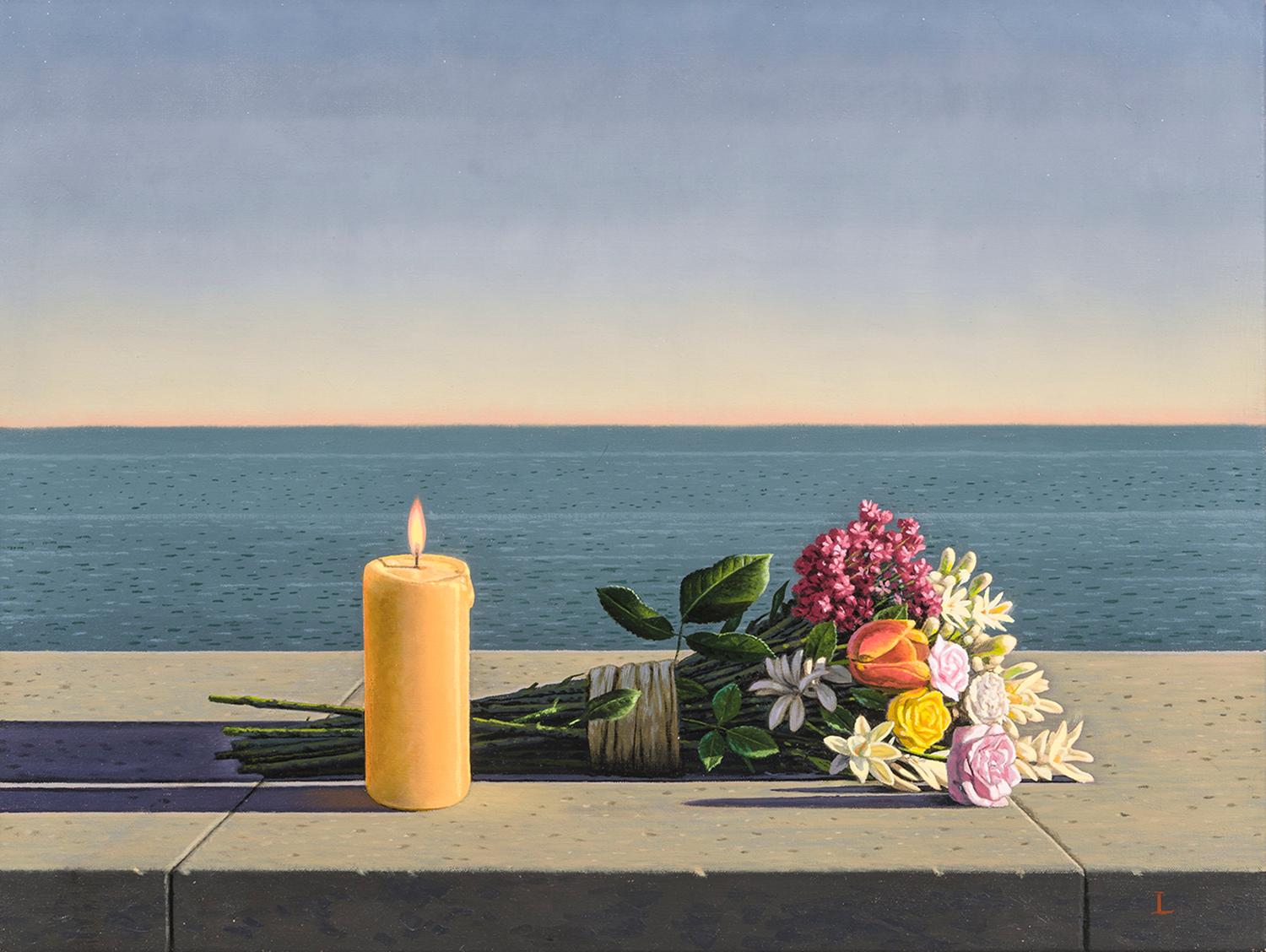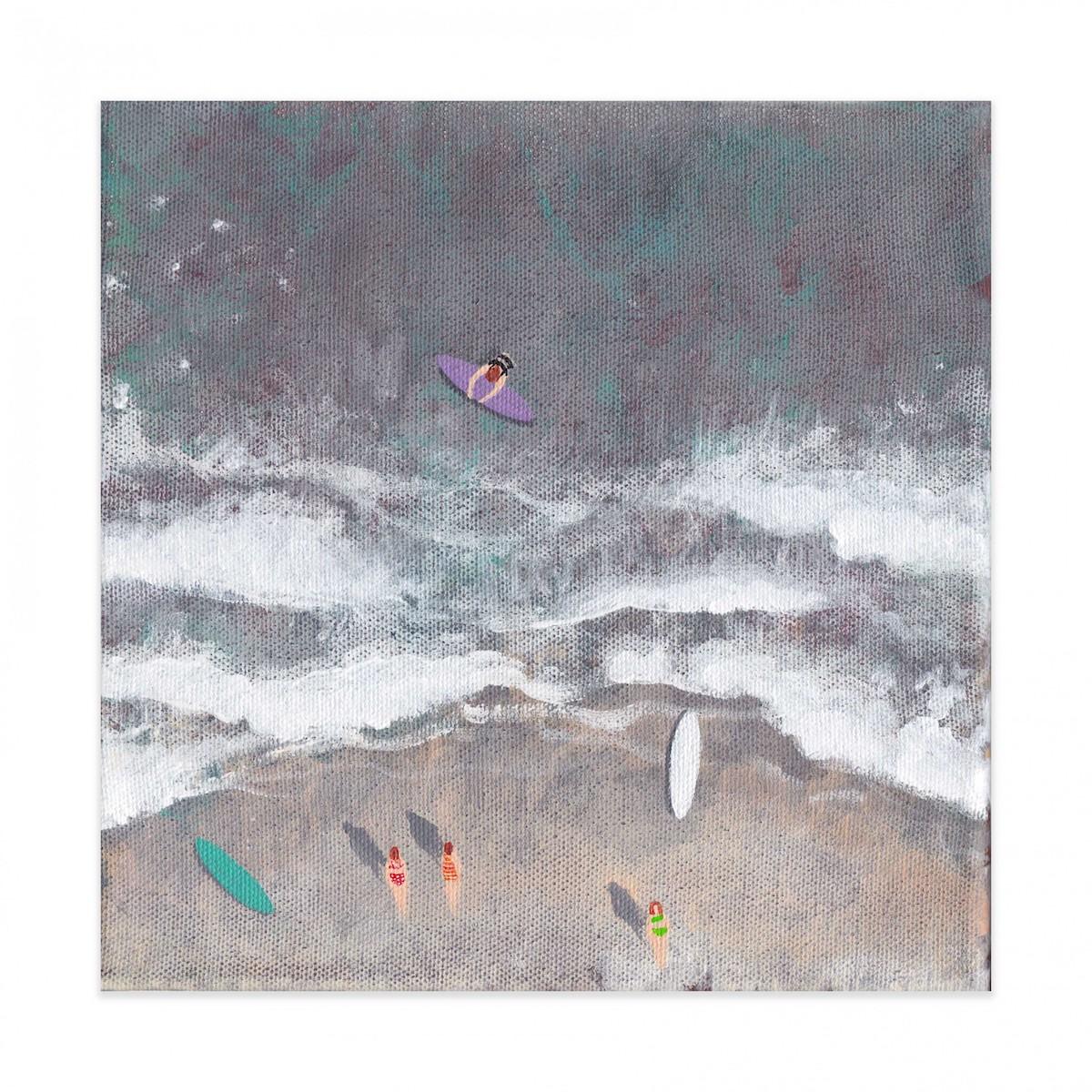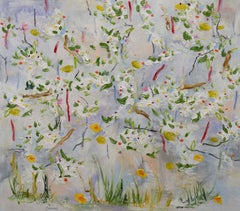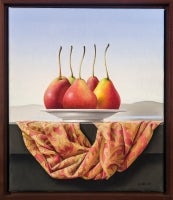
Five Pears
View Similar Items
Want more images or videos?
Request additional images or videos from the seller
1 of 5
James AponovichFive Pears2013
2013
- Creator:James Aponovich (1948, American)
- Creation Year:2013
- Dimensions:Height: 13 in (33.02 cm)Width: 11 in (27.94 cm)
- Medium:
- Condition:
- Gallery Location:New York, NY
- Reference Number:Seller: M 10157D.0141stDibs: G13101523570
About the Seller
5.0
Recognized Seller
These prestigious sellers are industry leaders and represent the highest echelon for item quality and design.
Established in 1952
1stDibs seller since 2010
32 sales on 1stDibs
Typical response time: 6 hours
Associations
Art Dealers Association of America
More From This SellerView All
- Falls View Suspension Bridge over the Niagara RiverBy Joachim Ferdinand RichardtLocated in New York, NYBorn in Brede, Denmark, Ferdinand Richardt studied at the Copenhagen Academy where he learned landscape painting under the German artist Gustav Hetsch. In 1855 Richardt came to America to visit Niagara Falls, and, according to the Catalogue of the Niagara Gallery (op. cit.), “to study the sublimity and grandeur of that wonderful work of Nature. . . .” While there he executed at least thirty-two paintings of various scenes in the area, which were exhibited and offered for sale at Henry Leeds & Co., New York, in 1857 (op. cit.). It is for this series of paintings that Richardt is best known. This painting depicts the the first Falls View suspension bridge over the Niagara River, which spanned the chasm about 300 yards north of the American Falls in the approximate location of the current Rainbow International Bridge. The view is taken from the American side, looking toward the Canadian side. Construction on the bridge began in the winter of 1867 when a rope was carried across the Niagara River over an ice bridge, thus establishing a physical link between the two shorelines. The first Falls View Bridge opened on January 2, 1869. TThe twin 100 ft. tall towers were constructed of timber and supported the main suspension cables, from which a timber truss deck was hung. The bridge served pedestrian, horse, and carriage traffic. Since its deck measured only 10 ft. wide, carriage traffic alternated directions. In 1872, the open timber towers were clad with wood and corrugated metal siding, which afforded the entire structure a more permanent look, and a steam-powered Otis elevator...Category
19th Century American Realist Landscape Paintings
MaterialsCanvas, Oil
- Mt. Etna from TaorminaBy Thomas FransioliLocated in New York, NYThomas Fransioli, born in 1906 in Seattle, Washington, trained as an architect at the University of Pennsylvania. He worked as an architect before his service in World War II. Largel...Category
20th Century American Realist Landscape Paintings
MaterialsCanvas, Oil
- Candle and FlowersBy David LigareLocated in New York, NYSAPERE AUDE. Dare to be wise. Immanuel Kant’s directive is embodied in the work of David Ligare. For thirty-five years, Ligare has dedicated his work to ...Category
2010s Contemporary Still-life Paintings
MaterialsCanvas, Oil
- Thrown Drapery (Redux) Study 1By David LigareLocated in New York, NYSigned and dated (at lower right): L; (on verso): D. Ligare / 2004Category
Early 2000s Contemporary Still-life Paintings
MaterialsCanvas, Oil
- Still Life with Polykleitian Head and AncathusBy David LigareLocated in New York, NYSAPERE AUDE. Dare to be wise. Immanuel Kant’s directive is embodied in the work of David Ligare. For thirty-five years, Ligare has dedicated his work to ...Category
Early 2000s Contemporary Still-life Paintings
MaterialsCanvas, Oil
- Strawberries Strewn on a Forest FloorBy William Mason BrownLocated in New York, NYWilliam Mason Brown was born in Troy, New York, where he studied for several years with local artists, including the leading portraitist there, Abel Buel Moore. In 1850, he moved to ...Category
19th Century American Realist Landscape Paintings
MaterialsCanvas, Oil
You May Also Like
- Contemporary oil painting on canvas - Peter Keizer - Flowers, NatureBy Peter KeizerLocated in Paris, France"Hidden grounds", oil painting of flowers (spring) by Peter Keizer. Simple, reduced forms, coarse materials, large areas of colour, often monochromatic, colour layers woven through ...Category
2010s Impressionist Landscape Paintings
MaterialsCanvas, Oil
- "Open veld", painting by Peter Keizer (57x65in), 2022By Peter KeizerLocated in Paris, France"Open veld", oil painting of flowers (spring) by Peter Keizer. Peter Keizer is a Dutch painter and sculptor, born in 1961. He studied at the Rijksakademie in Amsterdam, and began wo...Category
2010s Landscape Paintings
MaterialsCanvas, Oil
- Poetic & Romantic Suzhou Garden & bird and rock portrayed in conceptual styleLocated in Kuala Lumpur, MYSing By The Branches 唱枝头 Garden doors and windows appear in almost all Wang’s Suzhou garden paintings, but what are presented in the doors and windows are often unreal images from ei...Category
21st Century and Contemporary Conceptual Landscape Paintings
MaterialsCanvas, Oil
- Poetic & Romantic Suzhou Garden & bird and rock portrayed in conceptual styleLocated in Kuala Lumpur, MYSoar over the Mountain 轻羽千山 Garden doors and windows appear in almost all Wang’s Suzhou garden paintings, but what are presented in the doors and windows are often unreal images from...Category
21st Century and Contemporary Conceptual Landscape Paintings
MaterialsCanvas, Oil
- Post-Impressionist Floral Still Life, 'Poppies', Canadian Woman ArtistBy Teresa SmithLocated in Santa Cruz, CASigned lower right, 'T.K.S' and painted 2019; additionally signed verso. A large and vibrant study of poppy blossoms contrasted against a background of fragmented lilac, forest green and indigo. (The following is the artist's self-description of her work and process.) Teresa Smith received her B.A. in Visual Arts at Naropa University. Informed by spiritual practice and a naturalist philosophy, her art combines the richness of oil paint as a visceral material with contemplative practice, producing paintings on ecology with nature as icon. Influenced by Turner, O’Keeffe, Cezanne, and The Canadian Group of Seven, Smith paints the soul in nature. An appreciation for aesthetics and the deep woods provide seeds for the work revealing color combinations, line, and form. Bold colors and lyrical brushstrokes, scratches and drips of oil paint mutate creating a language of vital sensuality. Teresa’s oil paintings are about the mystery beneath the surface, the layer woven between worlds. The romance and richness of beauty, earth, salt air, wild roses, cedar and tide. My Process I paint landscapes. I live on a rural island surrounded by wild creatures, huge trees, ocean, mountains and open spaces. I ride a black Arabian mare through the old growth forest trailed by an Irish wolfhound named Griffin. As we move through the woods and vistas, I notice colors as they contrast with one another. I notice color, shapes, line and form that I would never have conjured on my own. I especially pay attention to the abstract spaces and patterns. We pause under ancient cedar and listen to water falling. Feeling into the spirit of the place. The forest, especially the ancient ones are rich with a presence. In the studio I stretch canvas and linen. I do this because I want the finest of quality and workmanship but also to honor and form relationship with surface. I use oil paint because of its buttery quality and vibrancy of color. I love the smell and the feel under my brush. I love that it is the medium of my lineage of painters. I love its softness and that it is archival and in my opinion the highest quality medium I can use. I love that I can create soft edges and blend beautiful passages. I use lavender essence or soybean oil to clean my brushes and make mediums of lavender, alkyd and walnut oil for making glazes. I worked in watercolors for many years and as with that medium see the benefit of glazing. That is using layers of paint and alkyd mixtures to create luminosity and light that makes a work “glow.” I work on several paintings at one time allowing them to dry between layers. It takes weeks, months or longer to finish a painting but in the end the work and time pay off. I am a contemplative painter. My time in the woods is separate from the studio but the influence is present. I paint from the heart. What comes up as first thought is what I put down. The thought that happens before it is analyzed and translated. I don’t usually have any idea of a direction when I start a painting. I begin with a thin drippy wash in a warm color like Indian yellow, ochre or transparent orange. I let the layer dry, then the next day create some chaos. Without any pre contrived ideas throw, squish, drip, scrub or scrape some paint on the canvas. The more chaotic the better. At this point I begin making order of the chaos one brushstroke at a time. This is where knowledge of color, composition, design and painterly quality come in. I begin to embellish and refine the shapes that were formed during the first couple of washes. Color is probably my most important consideration. I now focus on what color is a perfect combination to one that is down already. I contrast texture – thin wash next to impasto, for example. I work the shapes as if they are puzzle pieces, I use thin glazes to add luminosity and create colors that are unique and luscious. If things begin to seem too contrived I will grab a palette knife and arbitrarily add thick layers of paint. I will take a sharp instrument like a palette knife and cut through the layers revealing the colors underneath. There is really no beginning and no end. The work goes on for days, weeks or months. The closer to done a painting gets the slower I go. I stop when the painting feels resolved and seems to have a life of its own. EDUCATION 2012 Bachelor of Arts, Naropa University, Boulder CO...Category
2010s Post-Impressionist Landscape Paintings
MaterialsOil, Canvas
- 'Sunflower I', Canadian Woman Artist, Large Post-Impressionist Floral Still LifeBy Teresa SmithLocated in Santa Cruz, CASigned lower right, 'T.K.S' and painted 2019. A large and vibrant study of sunflower blossoms contrasted against a background of midnight blue. (The following is the artists's self-description of her work and process.) Teresa Smith received her B.A. in Visual Arts at Naropa University. Informed by spiritual practice and a naturalist philosophy, her art combines the richness of oil paint as a visceral material with contemplative practice, producing paintings on ecology with nature as icon. Influenced by Turner, O’Keeffe, Cezanne, and The Canadian Group of Seven, Smith paints the soul in nature. An appreciation for aesthetics and the deep woods provide seeds for the work revealing color combinations, line, and form. Bold colors and lyrical brushstrokes, scratches and drips of oil paint mutate creating a language of vital sensuality. Teresa’s oil paintings are about the mystery beneath the surface, the layer woven between worlds. The romance and richness of beauty, earth, salt air, wild roses, cedar and tide. My Process I paint landscapes. I live on a rural island surrounded by wild creatures, huge trees, ocean, mountains and open spaces. I ride a black Arabian mare through the old growth forest trailed by an Irish wolfhound named Griffin. As we move through the woods and vistas I notice colors as they contrast with one another. I notice color, shapes, line and form that I would never have conjured on my own. I especially pay attention to the abstract spaces and patterns. We pause under ancient cedar and listen to water falling. Feeling into the spirit of the place. The forest, especially the ancient ones are rich with a presence. In the studio I stretch canvas and linen. I do this because I want the finest of quality and workmanship but also to honor and form relationship with surface. I use oil paint because of its buttery quality and vibrancy of color. I love the smell and the feel under my brush. I love that it is the medium of my lineage of painters. I love its softness and that it is archival and in my opinion the highest quality medium I can use. I love that I can create soft edges and blend beautiful passages. I use lavender essence or soybean oil to clean my brushes and make mediums of lavender, alkyd and walnut oil for making glazes. I worked in watercolors for many years and as with that medium see the benefit of glazing. That is using layers of paint and alkyd mixtures to create luminosity and light that makes a work “glow.” I work on several paintings at one time allowing them to dry between layers. It takes weeks, months or longer to finish a painting but in the end the work and time pay off. I am a contemplative painter. My time in the woods is separate from the studio but the influence is present. I paint from the heart. What comes up as first thought is what I put down. The thought that happens before it is analyzed and translated. I don’t usually have any idea of a direction when I start a painting. I begin with a thin drippy wash in a warm color like Indian yellow, ochre or transparent orange. I let the layer dry, then the next day create some chaos. Without any pre contrived ideas throw, squish, drip, scrub or scrape some paint on the canvas. The more chaotic the better. At this point I begin making order of the chaos one brushstroke at a time. This is where knowledge of color, composition, design and painterly quality come in. I begin to embellish and refine the shapes that were formed during the first couple of washes. Color is probably my most important consideration. I now focus on what color is a perfect combination to one that is down already. I contrast texture – thin wash next to impasto, for example. I work the shapes as if they are puzzle pieces, I use thin glazes to add luminosity and create colors that are unique and luscious. If things begin to seem too contrived I will grab a palette knife and arbitrarily add thick layers of paint. I will take a sharp instrument like a palette knife and cut through the layers revealing the colors underneath. There is really no beginning and no end. The work goes on for days, weeks or months. The closer to done a painting gets the slower I go. I stop when the painting feels resolved and seems to have a life of its own. EDUCATION 2012 Bachelor of Arts, Naropa University, Boulder CO...Category
2010s Modern Landscape Paintings
MaterialsOil, Canvas

